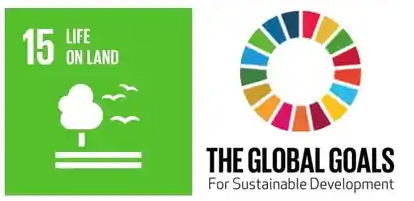Contents
Going on an African safari is a dream trip for many travelers, but it can also be an expensive one.
Planning a budget for an African safari is very important for your trip. While ensuring that you stay within your financial means.
In this article, we will discuss some tips and tricks on how to budget for an African safari.
While using Tanzania and Kenya as our case study.
Tanzania and Kenya are two of the most popular destinations for an African safari.
But they can also be quite expensive. Here are some specific tips on how to budget for a safari in Tanzania and Kenya
1. Choose the right time of year
In Tanzania, the high season for safaris is from July to October, while in Kenya, it is from July to September.
Prices are often higher during this time, so consider going during the low season. It starts from April to June or November to mid-December.
During this time, prices can be lower, and crowds can be thinner. For example during the Wildebeest Migration in Serengeti & Maasai Mara:
2. Research different safari options
In Tanzania, there are many different safari options available. Including luxury lodges and budget camping trips.
The Serengeti and Ngorongoro Conservation Areas are popular destinations. But they can also be more expensive.
Consider the southern parks like Selous Game Reserve or Ruaha National Park.
These parks offer excellent wildlife viewing experiences at a lower cost.
In Kenya, the Masai Mara National Reserve is a popular destination, but it can also be more expensive.
Consider visiting other parks like Amboseli National Park or Samburu National Reserve.
The price is lower and offers great wildlife viewing experiences at a lower cost.
3. Look for package deals
Many tour operators in Tanzania and Kenya offer package deals that can save you money on your safari.
These packages can include transportation, accommodation, meals, and activities.
Look for deals that offer flexibility, so you can add or remove activities as needed.
For example, a 5-day safari package in Tanzania can cost around $1000-$2000 per person.
While a 3-day package in Kenya can cost around $700-$1500 per person.
4. Consider the hidden costs
When budgeting for a safari in Tanzania or Kenya, don’t forget to consider the hidden costs.
These can include visas, vaccinations, travel insurance, and tips for guides and staff.
Make sure to factor these costs into your budget to avoid any surprises.
For example, the cost of a Tanzanian visa is $50 for a single-entry visa and $100 for a multiple-entry visa.
5. Be flexible
Flexibility can be key when budgeting for a safari in Tanzania or Kenya.
Consider traveling during the low season, staying in more affordable accommodation.
Or adjusting your itinerary to reduce costs. For example, you can choose to stay in a tented camp instead of a luxury lodge, which can save you hundreds of dollars.
6. Book in advance
Booking your safari in advance can help you save money. Many tour operators offer early bird discounts.
Or package deals that can help you save money on your safari.
By booking in advance, you can also avoid last-minute price increases or sold-out tours.
7. Choose a group tour
Joining a group tour can be a cost-effective way to go on a safari in Tanzania or Kenya.
Group tours can be more affordable than private tours because of shared costs.
Group tours often include transportation, accommodation, and meals.
Which can help you save money on your safari budget.
8. Stay outside the national parks
Staying outside of the national parks can be more affordable for accommodation.
Many lodges and campsites are outside of the parks, and they offer great wildlife viewing.
These accommodations can be less expensive than those located inside the parks.
9. Consider a self-drive safari
If you have experience driving in Africa. a self-drive safari can be a budget-friendly option.
Renting a car and driving yourself can be cheaper than hiring a guide or joining a tour.
Yet, it is important to note that driving in Africa can be challenging. So only attempt this option if you are experienced and confident.
10. Bring your own equipment
If you plan on camping or doing a self-drive safari, consider bringing your own equipment.
This includes a tent, sleeping bags, and cooking supplies.
This can help you save money on rentals or purchasing equipment in Africa.
Well-known public campsites in Tanzania are Simba in Ngorongoro and Seronera in Serengeti
Conclusion
Budgeting for a safari in Tanzania or Kenya requires some research and planning.
But with the right approach, it is possible to have an incredible experience. Without breaking the bank account.
Consider the time of year, safari options, package deals, hidden costs, and flexibility.
This will help you to create a budget that works for you.
By following these tips, you can make your African safari dream a reality in Tanzania or Kenya
Feel free to reach our team today. Request for a trip
Travel Tips Categories
Must Read Articles
Is it safe to take kids on a safari?
What is the safest country in Africa?
How much does a Tanzania Safari Cost
Where to go, Tanzania or South Africa?
Which offers the best safari, Tanzania or Kenya?
How much does it cost to climb Mount Kilimanjaro?
How to select a reliable tour operator?



















